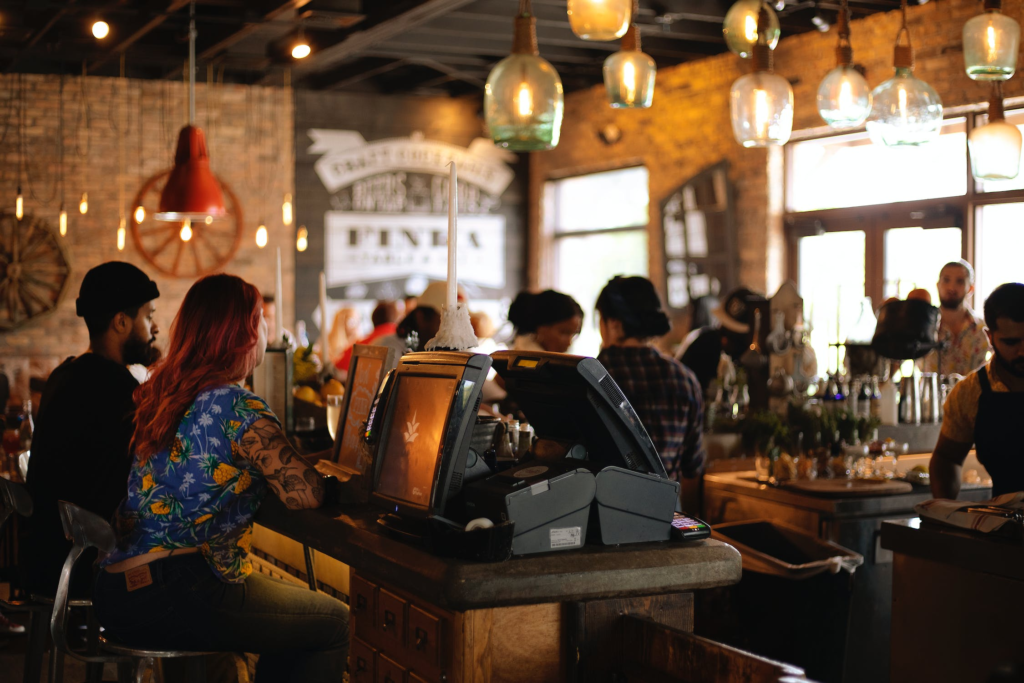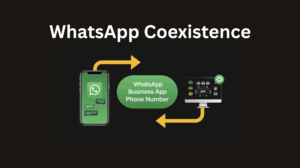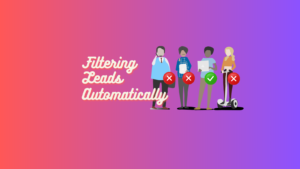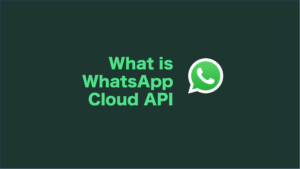In the fiercely competitive world of the restaurant industry, customer retention stands as a formidable challenge. As the proprietor of a restaurant, your focus isn’t solely on attracting new patrons through the door; it’s equally, if not more, critical to ensure that those who’ve dined with you once return for a second, third, and countless more visits.
In this article, we’ll unravel the secrets to retaining customers, an endeavor often more cost-effective than the relentless pursuit of new clientele. Our journey will take us into the realm of chatbots, versatile digital assistants that hold the potential to transform the way your restaurant engages with its patrons. From personalized service to efficient order management and proactive customer engagement, we’ll explore how these AI-driven marvels can work their magic.
But there’s more to the story. We’ll delve into the establishment of a robust CRM (Customer Relationship Management) database through chatbots, unveiling the power of data collection in understanding your customers better. This database will become your gateway to broadcast messaging, facilitated by the WhatsApp Cloud API. In this digital age, trust and authenticity are at a premium. We’ll explore how obtaining opt-ins through WhatsApp Messaging Templates can assure customers that your communications are genuine and not just another spammy message.
As we move forward, we’ll underline the significance of customer reminders and the pivotal role they play in retaining your audience’s “mind share.” The introduction of chatbots for efficient order management and seamless reservations will be discussed, and their impact on your customers’ experience explored. Moreover, the availability of chatbots 24/7 ensures your customers can always reach out for support.
In this article, we won’t just scratch the surface; we’ll go in-depth, sharing case studies, implementation tips, success measurement methods, and ways to overcome potential challenges. By the time we reach the conclusion, you’ll be armed with a comprehensive understanding of how chatbots can become your secret weapon for customer retention in the restaurant business.
The Importance of Customer Retention
In the ever-evolving world of restaurants, where new eateries seem to pop up on every corner, it’s easy for customers to get lost in the crowd. For restaurant owners, ensuring that diners remember your establishment and choose it again amidst the constant stream of new options is a significant challenge. That’s where customer retention steps in as the unsung hero of the dining industry.
While attracting new customers is undoubtedly essential, retaining existing ones is often more cost-effective. The costs associated with marketing, advertising, and promotions to lure new patrons can quickly add up, whereas keeping your current clientele engaged and satisfied presents a more economical approach.
Customer retention goes beyond the simple act of serving a delicious meal. It’s about building a relationship with your patrons, earning their trust, and creating a sense of loyalty. Happy, loyal customers not only return but also become brand advocates, spreading the word about your restaurant to friends and family.
Moreover, repeat customers tend to spend more on each visit. They are already familiar with your menu, service quality, and ambiance, making them more inclined to explore different offerings and indulge in upselling opportunities. In essence, they are a reliable source of revenue and a cornerstone of your business’s stability.
The journey to enhance customer retention begins with understanding the unique preferences, behaviors, and expectations of your patrons. And this is where chatbots come into play. These digital assistants have the power to transform your relationship with customers, providing personalized experiences, efficient services, and proactive engagement that can keep them coming back for more.
In the following sections, we’ll explore how chatbots can help you build a robust CRM database, harness data for customer insights, and employ broadcast messaging to reinforce customer loyalty. We’ll also discuss the importance of customer reminders and dive deeper into how chatbots can improve various aspects of your restaurant’s operations.
Building a CRM Database with Chatbots
In today’s digital age, data is often hailed as the new currency. For a restaurant business, building a comprehensive CRM (Customer Relationship Management) database is akin to striking gold. It’s the key to understanding your customers on a deeper level, their preferences, and their behaviors. This insight can inform your strategies, enhancing customer retention and loyalty.
Chatbots, those versatile digital assistants, are at the forefront of this data revolution. By integrating chatbots into your restaurant’s operations, you can seamlessly collect valuable customer information. But how does it work?
Imagine this: QR codes strategically placed on every table in your restaurant. Customers can simply scan these QR codes, and a chatbot interface opens up on their smartphones. This interaction becomes the gateway for your restaurant to collect valuable customer data, including contact information.
Not only does this streamline the process of obtaining customer details, but it also ensures that the information collected is accurate and up-to-date. Traditional methods like paper forms or manual entry often result in incomplete or outdated records, making them less effective for building a reliable CRM database.
With chatbots in the mix, you not only gather essential contact details but also gain insights into customer preferences, dining habits, and even feedback. This information serves as the foundation for personalized services and communication, making customers feel truly valued and understood.
Once you’ve built your CRM database, the possibilities are endless. You can segment your customers based on their preferences and behavior, allowing you to tailor your communication and marketing efforts. And that’s where broadcast messaging comes into play, further cementing customer loyalty.
In the next section, we’ll explore how to use the WhatsApp Cloud API for broadcast messaging, and we’ll dive into the significance of obtaining opt-ins to build trust with your customers. Stay tuned for the exciting possibilities that chatbots offer in retaining restaurant customers.
Broadcast Messaging with WhatsApp Cloud API with Personalization
With your CRM database in place, you’ve unlocked a treasure trove of valuable customer data. It’s not just a list of names and phone numbers; it’s a window into your customers’ preferences, dining habits, and feedback. But how can you leverage this data to enhance customer retention? The answer lies in the power of personalized broadcast messaging, made accessible through the WhatsApp Cloud API.
WhatsApp is a popular messaging platform, and it’s where your customers likely spend a considerable amount of their digital time. By utilizing the WhatsApp Cloud API, you can engage with your customers in a space they are comfortable with, making it a seamless and convenient experience for them.
Personalization is the key to effective broadcast messaging. You can send messages tailored to specific customer segments based on their preferences, dining history, or even special occasions like birthdays. By addressing customers by their first names and offering promotions or suggestions that align with their tastes, you create a sense of individualized care and attention.
One crucial aspect to consider when using the WhatsApp Cloud API is to obtain opt-ins from your customers. This is essential for building trust and ensuring that your messages are not classified as spam. WhatsApp Messaging Templates can be a valuable tool for this purpose. These templates allow you to send pre-approved messages to customers, requesting their consent to receive updates and promotions from your restaurant.
Obtaining opt-ins is not just about compliance; it’s about brand building. In a world rife with spammy SMS messages and questionable communications, having your restaurant’s phone number approved by WhatsApp is a signal that your business is legitimate and trustworthy. Over time, customers will come to trust not just your number but your brand, creating a strong and lasting connection.
Broadcast messaging opens up a world of possibilities. You can send announcements, promotion vouchers, new product updates, or even engaging video content directly to the devices of people who have dined at your restaurant. This is not just a marketing strategy; it’s a way to retain customers by keeping your restaurant in their thoughts.
In the next section, we’ll delve deeper into the reasons why customer reminders are essential. It’s a crucial aspect of retaining “mind share,” especially in an industry where customers often forget easily, with new restaurants continually entering the scene.
Why Customer Reminders are Essential
In the dynamic world of the restaurant business, customers tend to have a short memory. As new dining establishments are continually introduced, it’s easy for them to forget the experiences they’ve had at your restaurant. If you don’t remind them, you risk losing what marketers refer to as “mind share.”
“Mind share” is a valuable concept in the restaurant industry. It represents the space your restaurant occupies in your customers’ minds. The more prominent and positive that space is, the more likely they are to choose your establishment when deciding where to dine.
Customer reminders play a pivotal role in maintaining and even expanding your share of your customers’ minds. These reminders can take various forms, from simple email notifications about upcoming events, promotions, or new menu items to personalized messages on platforms like WhatsApp, where customers engage daily.
The key to effective customer reminders lies in their timeliness and relevance. You want to reach out to your customers when they are most likely to consider dining out. This could be during special occasions like birthdays or anniversaries, or it could be triggered by their past dining patterns.
Chatbots can be programmed to send reminders on specific dates or based on customers’ past dining history. By adding a personal touch to these messages and tailoring them to the individual customer, you ensure that they feel cared for and valued.
Remember that customer reminders aren’t just about promotions and offers. They can also serve as gentle nudges to remind customers of the unique experiences they’ve had at your restaurant. It’s about rekindling the emotional connection they formed during their previous visits.
These reminders can also highlight special events, new dishes, or even community initiatives that your restaurant is a part of. By keeping your customers informed and engaged, you continue to occupy a meaningful space in their minds, ensuring that they return to your establishment.
The effective use of chatbots in sending these reminders, with their ability to automate and personalize messages, ensures that your customers feel connected to your restaurant, even in the fast-paced world of dining choices.
In the upcoming sections, we’ll delve into the operational improvements that chatbots can bring to your restaurant, including efficient order management, seamless reservation systems, and 24/7 availability for customer support.
Efficient Order Management
One of the key challenges in the restaurant industry is ensuring that orders are taken accurately and efficiently. Miscommunications or delays in taking orders can lead to customer dissatisfaction, impacting their likelihood to return. This is where chatbots can revolutionize your operations by providing efficient order management.
Chatbots, equipped with well-programmed conversational skills, can engage with customers in a manner that ensures order accuracy. Customers can interact with chatbots to place their orders, ask questions about the menu, or request modifications based on their preferences or dietary restrictions.
The advantages of using chatbots for order management are multi-fold. They reduce the risk of misunderstandings between customers and staff, resulting in more accurate orders. This not only enhances customer satisfaction but also reduces the likelihood of food waste, contributing to cost savings for your restaurant.
Chatbots can also handle high volumes of orders simultaneously, ensuring that customers don’t experience long waiting times during peak hours. This boosts the overall efficiency of your restaurant, leading to improved customer experiences and higher retention rates.
Additionally, chatbots can remember customer preferences and past orders, offering personalized recommendations and making the dining experience more enjoyable. For example, if a customer has a preference for a specific type of cuisine or dietary restrictions, the chatbot can guide them to suitable menu choices.
Efficient order management, facilitated by chatbots, doesn’t just benefit your customers; it streamlines your restaurant’s operations, allowing staff to focus on other essential aspects of customer service. It’s a win-win situation that ultimately leads to higher customer retention rates.
In the following section, we’ll explore how chatbots can enhance the reservation process, making it more seamless for customers and contributing to their overall dining experience.
Seamless Reservation System
In the restaurant business, first impressions are paramount, and one of the initial touchpoints with your customers is the reservation process. Ensuring a seamless and hassle-free experience at this stage can set a positive tone for the entire dining experience. Chatbots play a crucial role in simplifying and enhancing the reservation process for your patrons.
With chatbots, customers can book tables at your restaurant without the need to make a phone call or navigate a complex reservation system. A chatbot interface allows them to check real-time availability, select their preferred date and time, and even specify any special requests or preferences. This convenience fosters a sense of control and personalization that customers appreciate.
Moreover, chatbots can send automated reminders to customers as their reservation date approaches, reducing the likelihood of no-shows and ensuring that your restaurant operates at peak efficiency. This not only benefits your bottom line but also contributes to customer satisfaction, as they experience minimal wait times upon arrival.
By providing a seamless reservation process, chatbots help customers feel that their needs are a priority. This positive first experience can set the stage for a memorable dining experience, increasing the likelihood of repeat visits and customer retention.
The benefits of a well-implemented chatbot-driven reservation system extend beyond customer convenience. It also empowers your restaurant to better manage table turnover, optimize seating, and plan staff resources effectively, ultimately leading to a more efficient and profitable operation.
In the next section, we’ll explore how chatbots ensure 24/7 availability and support for your customers. This round-the-clock assistance is crucial in enhancing customer satisfaction and loyalty.
24/7 Availability and Support
In the realm of customer service, availability is key. Customers expect assistance and support whenever they need it, and this expectation doesn’t confine itself to business hours. Chatbots play a pivotal role in providing round-the-clock availability and support, ensuring that your customers have a reliable and convenient way to get their questions answered or issues addressed.
Chatbots are always “on,” ready to engage with customers at any time, day or night. This level of availability not only meets the demands of today’s 24/7 digital world but also contributes to enhanced customer satisfaction and retention.
Whether a customer has a query about your restaurant’s opening hours, wants to make a reservation at an odd hour, or has special dietary requests, chatbots can handle these inquiries promptly. This level of responsiveness and convenience can make a significant difference in a customer’s decision to choose your restaurant over a competitor.
Furthermore, chatbots provide consistent and accurate responses, reducing the risk of miscommunication or errors in the information provided to customers. This reliability is particularly essential in the fast-paced restaurant industry, where a seamless customer experience is paramount.
By ensuring 24/7 availability and support through chatbots, you’re not just providing a service; you’re creating a lasting impression of reliability and attentiveness in your customers’ minds. This positive association is invaluable for customer retention, as they’ll remember that your restaurant is always there for them, whenever they need it.
In the next section, we’ll delve into the concept of proactive customer engagement and how chatbots can take the initiative in engaging with your customers. This proactive approach can significantly impact customer loyalty.
Proactive Customer Engagement
In the competitive landscape of the restaurant industry, waiting for customers to reach out to you is not always enough. Proactive customer engagement is the art of taking the initiative to connect with your patrons, seeking their feedback, and offering tailored promotions or recommendations.
Chatbots, with their versatile capabilities, are excellent tools for proactive customer engagement. They can initiate conversations with customers, following up on their dining experiences, inquiring about their satisfaction, and collecting valuable feedback. By doing so, chatbots signal to customers that their opinions matter and that your restaurant is genuinely interested in improving.
This proactive approach can lead to several benefits. First, it allows you to address any issues or concerns promptly, preventing negative experiences from becoming lasting grievances. It also demonstrates your commitment to providing top-notch service and ensuring that customers leave your restaurant with a positive impression.
Moreover, chatbots can take the initiative to offer personalized promotions, discounts, or recommendations based on the customer’s previous dining history or preferences. This can incentivize return visits and make customers feel valued and appreciated.
Through proactive customer engagement, chatbots help build a sense of community and loyalty around your restaurant. Customers are more likely to form emotional connections with establishments that actively seek their feedback and cater to their needs. This can lead to long-term retention and even word-of-mouth recommendations.
In the next section, we’ll explore the role of chatbots in data collection for customer insights. This data-driven approach is instrumental in understanding your customers better and tailoring your offerings to their preferences.
Data Collection for Customer Insights
In the digital age, data is a goldmine of information that can help businesses better understand their customers. Chatbots are powerful tools for collecting valuable customer data, providing insights into their preferences, behaviors, and feedback.
When customers interact with chatbots, they naturally share information about their dining experiences, preferences, and even dietary restrictions. Chatbots can record and organize this data, allowing your restaurant to build a comprehensive picture of each customer’s journey with your establishment.
This data-driven approach has several advantages. First and foremost, it enables you to personalize your interactions with customers. Chatbots can use this data to offer tailored recommendations, promotions, and even menu suggestions that align with the customer’s past choices.
Furthermore, customer data can assist in segmenting your audience based on various criteria. For example, you can categorize customers by their dining frequency, their favorite menu items, or special occasions like birthdays. This segmentation allows for targeted marketing efforts, ensuring that each customer receives communication that’s relevant to their interests.
The insights derived from customer data can inform your menu offerings, pricing strategies, and operational decisions. For instance, you can identify which dishes are the most popular or which times of the day experience the highest foot traffic, allowing you to optimize your operations accordingly.
Chatbots serve as a bridge between your customers and your restaurant’s database, ensuring that the data collected is accurate and up-to-date. This data is the foundation for personalized service, proactive customer engagement, and tailored marketing efforts, ultimately contributing to customer retention.
In the following section, we’ll share case studies and real-world examples of restaurants that have effectively used chatbots and CRM databases to retain their customers. These success stories can serve as valuable inspiration and insights for your restaurant.
Tips for Implementing Chatbots
1. Define Your Objectives
Start by outlining clear objectives for your chatbot. What specific tasks do you want it to handle? Whether it’s taking orders, making reservations, or collecting customer data, a well-defined purpose ensures that your chatbot serves its intended role effectively.
2. Seamless Integration
Ensure that the chatbot integrates seamlessly with your existing systems. It should be able to communicate with your reservation system, POS (Point of Sale), and customer database to provide real-time information and personalized experiences.
3. Conversational Design
Craft the chatbot’s conversational design carefully. The language, tone, and style should align with your restaurant’s brand and customer expectations. Human-like interactions are essential for a positive customer experience.
4. Menu Assistance
If your restaurant has a diverse menu, consider implementing chatbots that can assist customers in navigating the offerings. Chatbots can help customers find the right dish, offer dietary information, and even suggest wine pairings.
5. Data Privacy and Security
Data collection is vital, but it should be done with customers’ privacy in mind. Ensure that your chatbot complies with data protection regulations and that customer data is stored securely.
6. Feedback Loops
Implement feedback loops for both customers and staff. Collect feedback on the chatbot’s performance and use it to make improvements. Customer feedback can be invaluable in refining the chatbot’s interactions.
7. Customer Education
Ensure that your customers are aware of the chatbot’s capabilities. This can be done through promotional materials in your restaurant, social media, and your website. Customers should know how to engage with the chatbot for various services.
8. Staff Training
Train your staff to work effectively with the chatbot. They should know how to assist customers if the chatbot encounters limitations or if a customer prefers human interaction.
9. Monitoring and Analytics
Implement analytics tools to track the chatbot’s performance. This data can offer insights into customer behavior, preferences, and the impact of the chatbot on customer retention.
By following these tips, you can ensure that your chatbot implementation is not only efficient but also contributes to the seamless customer experience that fosters loyalty and retention.
In the next section, we’ll discuss how to measure the success of your chatbot and CRM database initiatives. Measuring success is essential for making informed decisions and continuous improvement.
Measuring Success
To ensure that your restaurant’s chatbot and CRM database initiatives are on the right track, it’s essential to establish key performance indicators (KPIs) and measurement strategies. Here are some metrics and insights you should track:
1. Customer Retention Rate
Calculate the percentage of customers who return to your restaurant after their initial visit. An increase in this rate indicates the success of your retention strategies.
2. Customer Satisfaction
Collect feedback from customers who have engaged with the chatbot. Use surveys or ratings to gauge their satisfaction with the chatbot’s services and overall dining experience.
3. Order Accuracy
Monitor the accuracy of orders taken through the chatbot. Fewer errors and mistakes signify improved customer experiences and efficient operations.
4. Reservation Conversion Rate
Track the percentage of reservation inquiries that convert into actual bookings. An increase in this rate suggests a seamless reservation system.
5. Opt-In Rate
Measure the rate at which customers opt-in to receive promotions and updates. A higher opt-in rate indicates customer interest in your communications.
6. Average Order Value
Analyze the average amount spent by customers when ordering through the chatbot. Increasing this value can lead to higher revenue per customer.
7. Response Time
Monitor the time it takes for the chatbot to respond to customer inquiries. Faster response times often lead to improved customer satisfaction.
8. Feedback Analysis
Examine the feedback collected through the chatbot. Identify recurring issues, suggestions, and compliments. Use this data to make improvements.
9. Customer Data Quality
Assess the quality and completeness of the customer data collected by the chatbot. Accurate data is essential for personalization.
10. Social Media and Review Engagement
Measure the engagement on your social media channels and online review platforms. Increased positive engagement can indicate higher customer satisfaction.
11. Cost Savings
Calculate the cost savings achieved through the chatbot’s efficiency in order management and reservation handling. This can include reduced labor costs and decreased food wastage.
12. Repeat Visit Frequency
Track how often customers return to your restaurant. An increase in the frequency of repeat visits is a strong indicator of customer retention.
Measuring success is an ongoing process. Regularly analyze these metrics, compare them with your goals, and make necessary adjustments to your chatbot and CRM strategies.
The restaurant industry is dynamic and competitive, and customer retention is a constant challenge. However, with the integration of chatbots and CRM databases, your restaurant can gain a competitive edge. These technologies offer a range of benefits, from personalized service and efficient order management to proactive customer engagement and data-driven insights.
By implementing chatbots effectively, your restaurant can streamline operations, improve the customer experience, and ultimately boost customer retention. These technologies create a lasting impression of reliability, care, and personalization that sets your restaurant apart.
Ready to Elevate Your Restaurant’s Customer Retention?
Explore the possibilities of chatbots and CRM databases to enhance customer experiences, boost retention, and grow your restaurant’s success. Get in touch with us to learn more about implementing Chateefy effectively for your restaurant.





